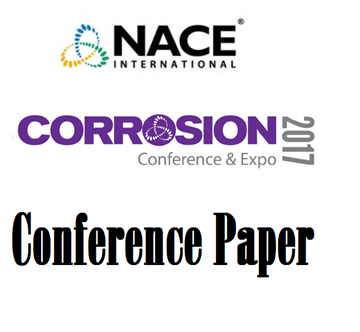Search
NACE Conference Papers
View as
Sort by
Display
per page
The API RP 14E Erosional Velocity Equation: Origin Application Misuse Limitation and Alternative
Product Number:
51319-13206-SG
Publication Date:
2019
$20.00
The Application of Ceramic Coatings to Extend Radiant Tube Life in Process Heaters and Improve Operational Efficiency with Cost Benefit Analysis
Product Number:
MPWT19-14438
Publication Date:
2019
$0.00
The Application of Molecular Microbiological Methods for Early Warning of MIC in Pipelines
Product Number:
51313-02029-SG
ISBN:
02029 2013 CP
Publication Date:
2013
$20.00
The Case Against Galvanized Piping in Domestic Water Systems
Product Number:
51317--9398-SG
ISBN:
9398 2017 CP
Publication Date:
2017
$20.00
The Commercialization of Self-Healing Technology in Normal Epoxy Coatings
Product Number:
51315-5790-SG
ISBN:
5790 2015 CP
Publication Date:
2015
$20.00
The Complexities of SSC testing of SMSS From A Steelmaker’s Perspective
Product Number:
51319-12893-SG
Publication Date:
2019
$20.00
The Determination of the Chloride Threshold of Stainless Steel in Concrete – A Review
Product Number:
51321-16179-SG
Publication Date:
2021
$20.00
The Development of Novel Corrosion Inhibitors for High Temperature Sour Gas Environments
Product Number:
51320-14591-SG
Publication Date:
2020
$20.00
The Development of Novel Laboratory Test Method for Scale Inhibitor Evaluation in the Presence of Ferrous Iron
Product Number:
51320-14443-SG
Publication Date:
2020
$20.00
The Development of Novel Laboratory Test Method on Evaluation of Scale Inhibition and Dispersancy for Cooling Water Applications
Product Number:
51320-14491-SG
Publication Date:
2020
$20.00
The Development of Sulfur Solvent/Corrosion Inhibitor Product for Extremely Aggressive Sour Environm
Product Number:
51316-7783-SG
ISBN:
7783 2016 CP
Publication Date:
2016
$20.00
The Effect Of Alternate Immersion On Stress Corrosion Cracking Behavior Of Steel And Nickel Alloys In Natural Seawater
Product Number:
51321-16857-SG
Publication Date:
2021
$20.00












